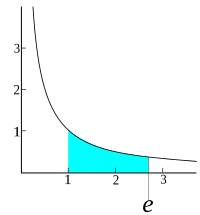
Photo from wikipedia
Background Low back pain (LBP), the most common musculoskeletal condition, imposes a significant burden on healthcare and triggers mental and physical disorders. Before surgery, patients are eligible for minimally-invasive treatments,… Click to show full abstract
Background Low back pain (LBP), the most common musculoskeletal condition, imposes a significant burden on healthcare and triggers mental and physical disorders. Before surgery, patients are eligible for minimally-invasive treatments, including transforaminal epidural steroid injection (TFESI). We aimed to compare fluoroscopically- and CT-guided TFESI in patients with subacute (4-12 weeks) and chronic (≥12 weeks) LBP. Methods In this prospective cohort study, 121 adults with subacute or chronic LBP were recruited. Using propensity score matching (PSM), we created two age, sex, and body mass index (BMI) matched groups of fluoroscopically- and CT-guided TFESI, each including 38 patients. The outcomes of interest were the Oswestry disability index (ODI) and numerical rating scale (NRS), which were measured in all patients before the procedure and at the three-month follow-up. Then, the ODI and NRS mean changes were compared between Fluoroscopy and CT groups using repeated measures ANOVA. All analyses were performed with IBM SPSS Statistics for Windows, version 26 (IBM Corp., Armonk, NY, USA). Results Of the total 76 matched patients with a mean (SD) age of 66.22 (13.49), 81 (66.9%) were female. ODI and NRS scores significantly decreased from baseline to the three-month follow-up in both treatment groups. The ODI score mean change from baseline to follow-up compared between the two groups was insignificant (fluoroscopy vs. CT mean difference (95% CI): 1.092 (-0.333-2.518), P = 0.131). Similarly, the NRS score mean change from baseline to follow-up compared between the two groups was insignificant (fluoroscopy vs. CT mean difference (95% CI): -0.132 (-0.529-0.265), P = 0.511). Conclusion Fluoroscopically- and CT-guided TFESI show similar therapeutic effectiveness in patients with subacute and chronic LBP.
Journal Title: Medical Journal of the Islamic Republic of Iran
Year Published: 2023
Link to full text (if available)
Share on Social Media: Sign Up to like & get
recommendations!